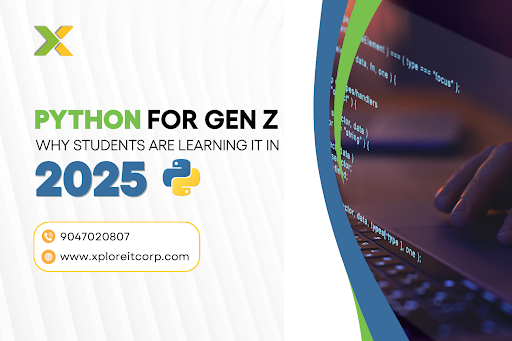Career Guide to Digital Marketing for Students
Career Guide to Digital Marketing for Students Career Guide to Digital Marketing for Students: This is the time and age when marketing has changed very much in its procedure due to the very fast-paced evolution of technology. Today, it is no more a core subject of study but rather opened for one of the best career options. Be a student weighing options or an individual wanting to switch industries, it is a practical thing to know about digital marketing. Another interesting development is that industries such as AI even have digital marketing strategies. For those who are interested in learning the fundamentals of AI along with marketing, taking an artificial intelligence course in Coimbatore will definitely add value to your skills. Table of Contents Why Become a Digital Marketing Professional? Digital marketing provides students with numerous opportunities. Unlike traditional marketing, this field is dynamic, measurable, and impactful. As all companies go online, the need for skilled digital marketers with digital marketing knowledge increased. Companies started focusing on integrating artificial intelligence in automation and personalization of their marketing. The amalgamation of knowledge about artificial intelligence which an students can get through an artificial intelligence course with placement with digital marketing can present them with an additional edge in the competitive job market.n a competitive advantage in the job market. Key Ingredients of Digital Marketing 1. SEO:It basically refers to the promotion of all activities which help you increase optimization of your website on search engines using usage of keywords, backlinking and by making technical changes. 2. Content marketing: It aims to come up with high quality and valuable content to attract and retain a defined audience. 3. Social Media Marketing:Utilizing different media platforms such as Facebook, Instagram, and LinkedIn to reach an audience. 4. Pay-Per-Click Advertising (PPC): Sending targeted traffic through paid advertising using tools like Google Ads. 5. Email Marketing: Relationship building with prospective and existing customers through targeted emails. 6. Affiliate Marketing: Partnering with affiliates to market products and services. Key Skills Required for Success with Digital Marketing 1. Creativity: Developing catchy content and campaigns. 2. Perspicuity: Consciously measuring the efficacy of a campaign and making decisions pertaining to data. 3. Technical Knowledge: Being well acquainted with tools such as Google Analytics, AdWords and social media algorithms. 4. AI Integration: AI being at the forefront of marketing nowadays becomes a key area of knowledge in AI tools and platforms that will keep one in the race with the pace of the AI courses by Xplore IT Corp. Impact and Influence of AI in the Future of Digital Marketing Never forget that AI technology will alter the ways marketers carry out their campaigns in digital marketing processes. A few particular examples of how AI affects digital marketing are: 1. Personalization: AI allows hyper-personalization in marketing by scrutinizing the consumer behavior. 2. Chatbots: Serving the customer round-the-clock. 3. Predictive Analytics: Anticipation of what is about to happen. 4. Programmatic Buying: Enhancement of ad buying through automating the purchase and keeping the process itself more efficient. Advantages of following a Career Guide to Digital Marketing for Students: Career Paths in Digital Marketing Listed below are some of the topmost digital marketing designations: SEO Specialist Social Media Manager PPC Analyst Content Marketer Digital Marketing Strategist Email Marketing Specialist Career Paths in Digital MarketingListed below are some of the topmost digital marketing designations: SEO Specialist Social Media Manager PPC Analyst Content Marketer Digital Marketing Strategist Email Marketing Specialist How Xplore It Corp Could Help We shape competent students who will equip them with the skills required to shine in this world at Xplore IT Corp, where we have courses like the artificial intelligence course in Coimbatore, as well as the digital marketing training courses that help students gain practical experience along with what is happening in the industry.With a focus on placements, our artificial intelligence course with placement ensures you’re job-ready upon completion. Steps to Kickstart Your Digital Marketing Career 1. Base Course – Start with a core digital marketing course. 2. Tools-oriented: Know Google Analytics, SEMrush, and MailChimp. 3. Up-to-Date: Through industry blogs, webinars, and networking with professionals 4. Real Projects Practice: Portfolio is the reflection of your skills 5. Certifications: Add value to your resume Conclusion Students can find tremendous doors in digital marketing. It has always kept on changing. If one identifies the needed skills and knowledge, it can really help them in building a successful career in that field. It really doesn’t matter whether you want to know about Marketing and its changing dimensions through AI or be a learned master at the normal digital marketing techniques, Xplore IT Corp courses can be a good help for you to achieve it. So come on! Start right now and be a part of digital change! Explore the world of artificial intelligence in Coimbatore with Xplore IT Corp. Our course provides in-depth knowledge, practical training, and placement support to help students thrive in the AI industry.







